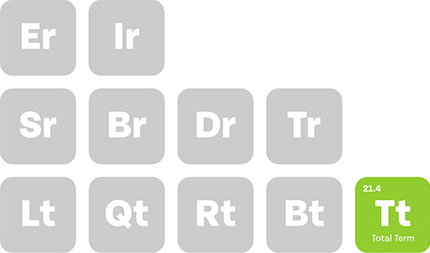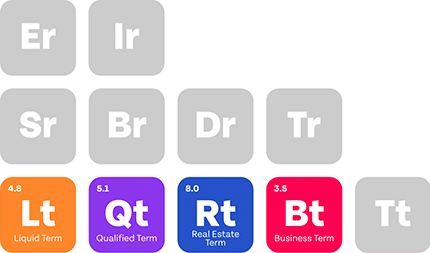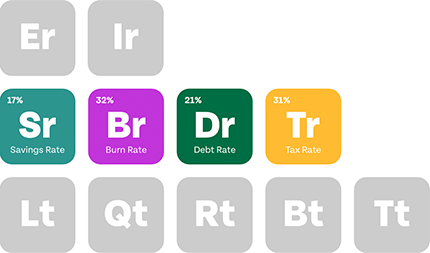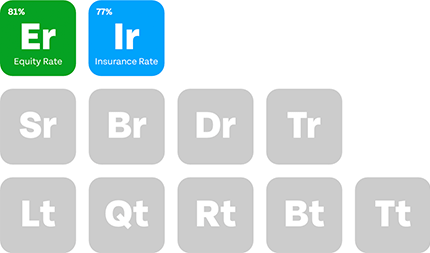Your disability insurance should cover at least 60% of your lost income.
But the truth is, 60% is more like a rule of thumb than a definite answer, at least for high earners like physicians who spend around 15%–35% of their income on taxes.
Treat this guide as a series of steps or thoughts you should undergo to help you find the ideal amount of disability insurance that you need.
What we will do is use the most recent data to determine the average income of a physician, then subtract all the necessary expenses from it (plus a fair range of disposable income).
Key Takeaways
- Physicians should aim for disability coverage that replaces over 60% of income.
- Calculating coverage needs involves analyzing taxes, expenses, loans, and premiums.
- Employer policies alone often lack sufficient protection for high-earning physicians.
- Individual plans with own-occupation definitions offer stronger, long-term security.
Table of Contents
Understand Your Expenses
Let’s say that you’re currently a physician. According to our data, you should be earning an average of $180,000 and $300,000 yearly.
That large range is because of the various specialties, locations, experience levels, and other factors that affect your income.
We’ll narrow it down to the mean, which is $240,000 a year or around $115.38 per hour. That number is more than enough to cover your basic expenses, which are as follows:
1. Necessary Expenses
| Expense | One Person | Two Persons | Three Persons | Four Persons |
|---|---|---|---|---|
| Food | $458 | $820 | $977 | $1,143 |
| Housekeeping supplies | $44 | $75 | $83 | $82 |
| Apparel & services | $87 | $157 | $187 | $300 |
| Personal care products | $48 | $80 | $87 | $97 |
| Miscellaneous | $171 | $279 | $343 | $405 |
| Total | $808 | $1,411 | $1,677 | $2,027 |
Data by the IRS
Since you’re thinking of disability insurance, your necessary expenses are already starting to pile up. We’ll assume that you’re married and have at least one son or daughter, which puts you in the three-person category ( $1,677 a month or $20,124 a year).
Note that if you’re not in the three-person category, you’ll have to adjust your expenses up or down. Plus, we’re talking about the average, which can vary by location. This is why we said earlier that there’s no one-answer-fits-all in this regard.
So far, we’ve deducted $20,124 for necessary payments out of our $240,000, leaving us with $219,876 . Now, let’s talk about taxes.
2. Taxes
Since the U.S. tax system operates on brackets, your tax percentage will depend on how much you make.
We’ll be using the IRS’s most recent 2024 data to make our calculations. You can refer to it here. Note that we’ll be filing our taxes on a married filing jointly basis, which goes as follows:
| Tax Rate | On Taxable Income From … | Up To … |
|---|---|---|
| 10% | $0 | $23,200 |
| 12% | $23,201 | $94,300 |
| 22% | $94,301 | $201,050 |
| 24% | $201,051 | $383,900 |
| 32% | $383,901 | $487,450 |
| 35% | $487,451 | $731,200 |
| 37% | $731,201 | And up |
Data by the
Now, let’s do the maths:
- 10% Bracket: $23,200 x 0.10 = $2,320
- 12% Bracket: ($94,300 – $23,201 + 1) x 0.12 = $71,100 x 0.12 = $8,532
- 22% Bracket: ($201,050 – $94,301 + 1) x 0.22 = $106,750 x 0.22 = $23,485
- 24% Bracket: ($240,000 – $201,051 + 1) x 0.24 = $38,950 x 0.24 = $9,348
On adding up the tax from each bracket, we get: $2,320 + $8,532 + $23,485 + $9,348 = $43,685
So, the estimated 2024 federal income tax for a married couple filing jointly with a taxable income of $240,000 would be approximately $43,685 .
Note: This calculation assumes that the spouse has no income. Expect more taxes if the spouse is also working.
So far, we’ve deducted $20,124 for necessary expenses and $43,685 for taxes, bringing us to $176,200. In other words, approximately 26.5% was taken out of your income so far for regular expenses and taxes.
3. Student Loans
According to the Education Data Initiative (EDI), 73% of medical school graduates have student loans. EDI also estimates that the average student loan in the United States is around $234,597 .
Unfortunately, it’s difficult to accurately estimate how much that will reflect on your mandatory monthly payments. But we can provide a rough estimation.
Student loans can be paid back as follows:
- High Interest Rate, Shorter Term
- Moderate Interest Rate, Longer Term
- Lower Interest Rate, Very Long Term
Once again, we’ll take the average and assume a moderate interest rate with a longer term. We’ll consider a 6% interest rate and a 20-year repayment term.
- Interest Rate: 6% per year (0.06 as a decimal)
- Loan Term: 20 years (240 months)
The formula is as follows: M = P [ i(1 + i)^n ] / [ (1 + i)^n – 1], where:
- M = Monthly Payment
- P = Principal Loan Amount ($234,597)
- i = Monthly Interest Rate (Annual rate / 12) = 0.06 / 12 = 0.005
- n = Total Number of Payments (Loan term in years * 12) = 20 x 12 = 240
Plugging in the values, we get: M = $234,597 [ 0.005(1 + 0.005)^240 ] / [ (1 + 0.005)^240 – 1], bringing our monthly payment to around $1,675 and our yearly to $20,103 .
Deduct that from our remaining $176,200 , and we get $156,097.
4. Disability Insurance Premiums
Let’s not forget the disability insurance policy premiums. These are a little hard to narrow down since the exact cost depends on the policy itself, coverage, your specialty, age, health, elimination period, etc.
However, our data estimates the average cost of disability insurance to be $290-$900 /month, a mean of $595 a month or $7,140 a year. Our new remaining sum is $148,957.
5. Disposable Income
Disposable income is the sum you allow yourself to spend on your wants rather than needs. This can vary from person to person, and high-earners are expected to spend much more in that category for cars, luxury items, trips, electronics, and such.
On applying the 50-20-30 rule, 30% of your net income will be reserved as disposable income. On taking that 30% out of the original net income after taxes ($240,000 – $43,685) x 30%, we get around $58,894 of disposable income for this salary range.
Subtract that from our remaining $148,957, and we get $90,063.
How Much Disability Insurance Do I Need?
We started with $240,000 and ended up with $90,063 that we didn’t need to spend. This means we spent approximately 62.5% of what we made as a physician.
In other words, if our disability insurance coverage covers 62.5%+ of our monthly income, we’re good to go.
How to Get the Ideal Disability Coverage?
The truth is that getting that 62.5%+ disability coverage using a single policy isn’t an easy feat. So, how do you actually secure that level of protection?
1. Understand the Types of Disability Insurance
There are primarily two sources of disability insurance you should consider:
- Employer-sponsored coverage: often called group long-term disability insurance and is typically part of your employee benefits package. While convenient, it usually only covers 40%–60% of your base salary and may have significant limitations.
- Individual disability insurance : this is a policy you purchase personally, separate from employer coverage. It offers more protection and stays with you regardless of job changes.
Related: Group Disability vs. Individual Disability Insurance for Physicians
2. Evaluate Your Employer’s Long Term Disability Coverage
You should thoroughly understand what you already have. Request the complete policy documentation from your HR department and evaluate the following:
- The benefit percentage
- Monthly benefit cap (often $5,000-$10,000)
- The elimination period (typically 90–180 days)
- Benefit period, which is how long benefits last (ideally to retirement age)
- The definition of disability (own-occupation vs any-occupation)
- Taxation of benefits (employer-paid premiums often mean taxable disability benefits)
3. Supplement with Individual Disability Insurance
High-earners, in general, and physicians, in specific, will likely need individual disability income insurance. However, not all policies are the same; you should look for:
True Own-Occupation Definition
Own-occupation means the policy pays if you can’t perform the specific duties of your medical specialty, even if you can work in another medical field or profession. This definition is critical for specialists whose income is tied to specific procedures or skills.
Non-Cancelable and Guaranteed Renewable
These provisions ensure the insurance company can’t cancel your policy, increase your premiums, or change policy terms as long as you pay premiums on time.
We can’t emphasize how important this is, as many own-occupation policies switch to any-occupation after just two years, even if you’re paying on time.
Future Increase Options
These options allow you to increase coverage as your income grows without additional medical underwriting. This is especially valuable for residents and early-career physicians.
Residual Disability Benefits
Not all disabilities put you completely out of action. Residual disability benefits pay partial benefits if you experience income loss due to disability but can still work in some capacity.
If anything, partial disabilities are more common for physicians than total ones.
Related: Physician Disability Insurance: Different Types, Premiums, and Benefits
Don’t Leave Money on the Table
This guide shows you the ins and outs of how disability insurance replaces your income and how you can make the most out of it.
However, to avoid turning this into a giant mathematical equation, we didn’t talk about other sources that can drain your money. We’re talking about unexpected costs, car repairs, materials for specialty, continuing education, etc.
In other words, we’ve shown you the pattern that you should follow to estimate the disability insurance that you need. Still, you’re a physician, and the broad ranges in this guide may not be fitting for someone who values expertly estimated data like you do.
It’s hard to find a way around consulting a financial professional, and that’s where Physicians Thrive comes in. Contact us, let us know of your circumstances, and we’ll do the heavy lifting to help you get the best policies, guaranteeing you a suitable income benefit.







































